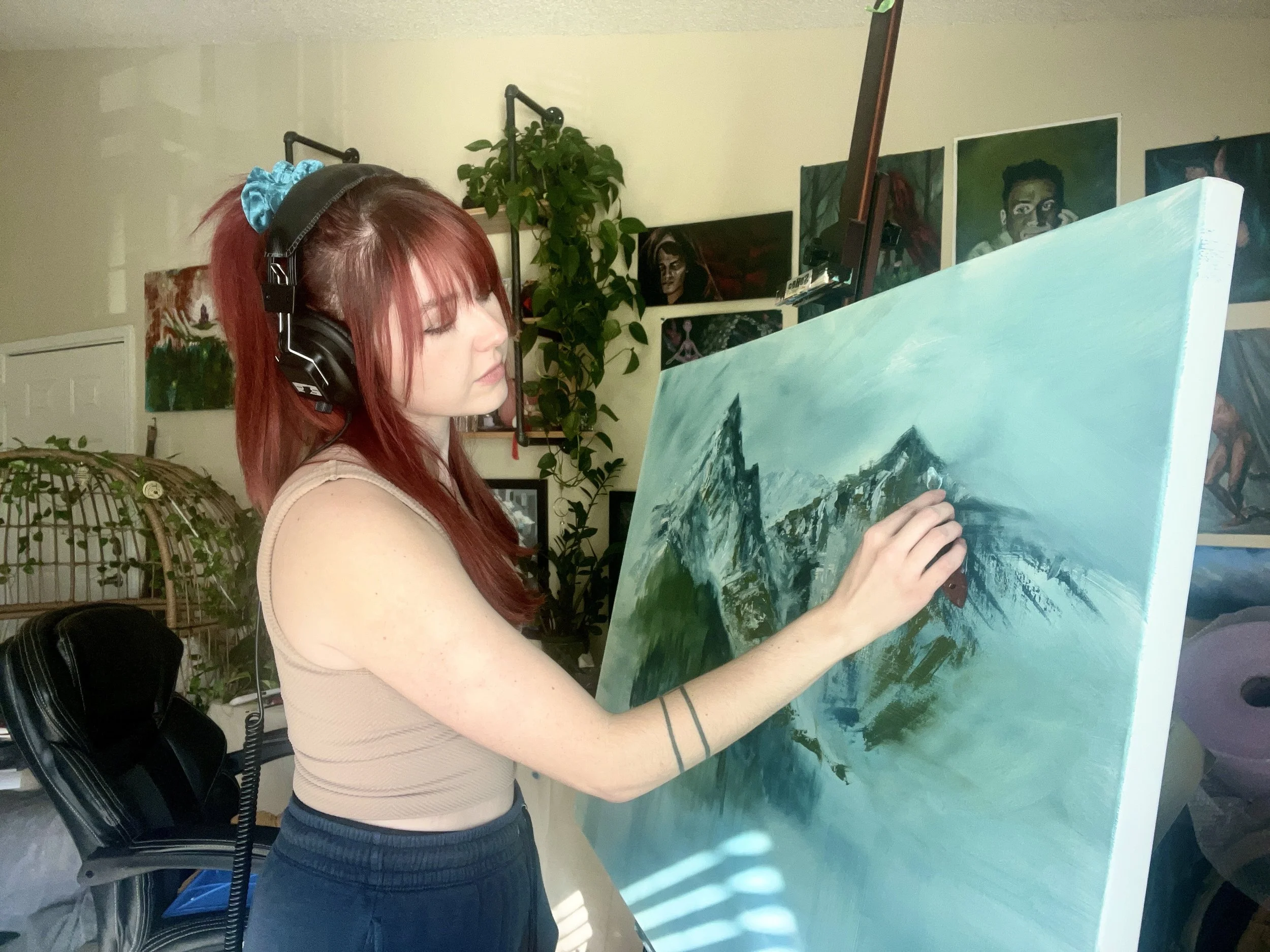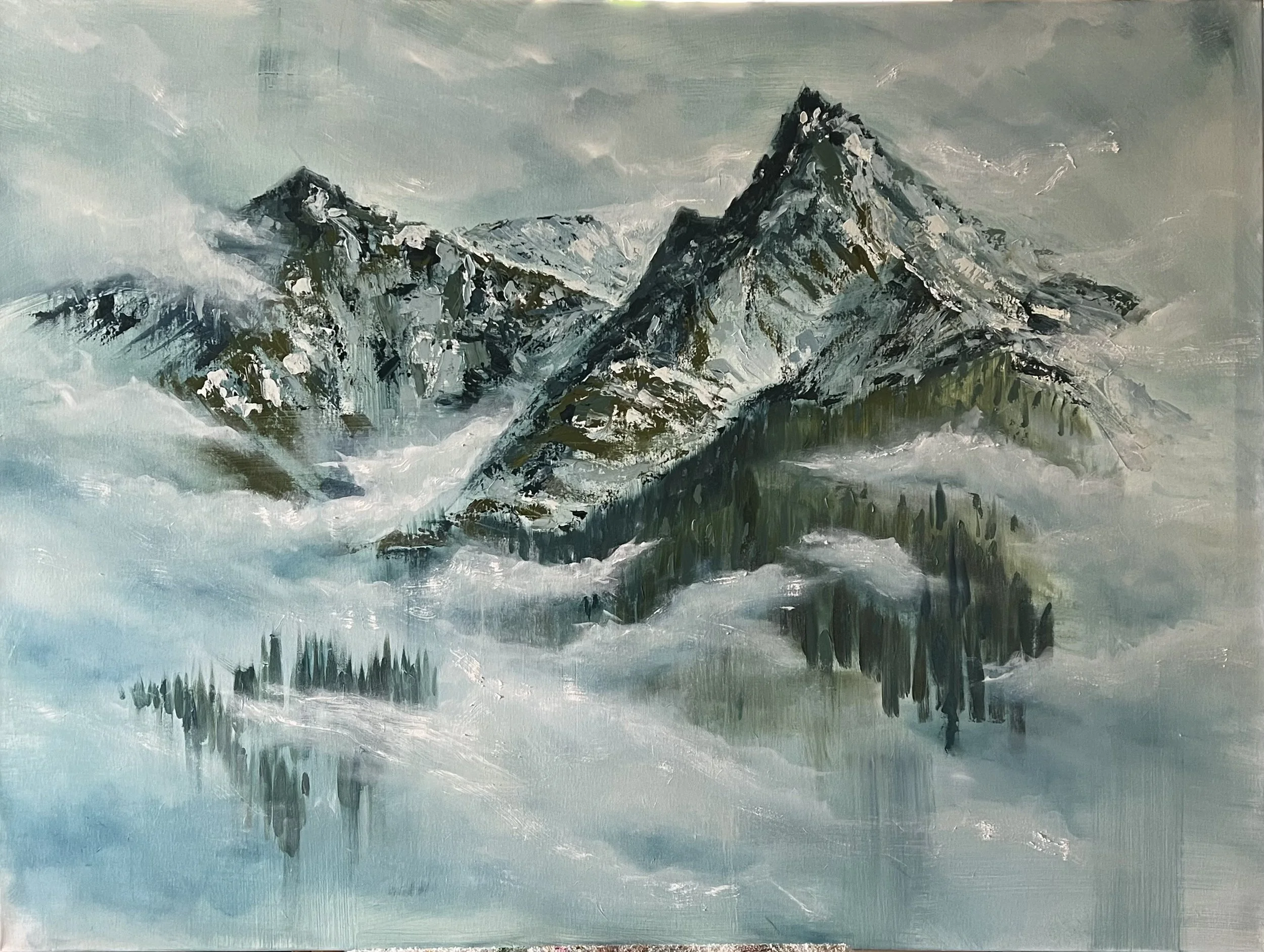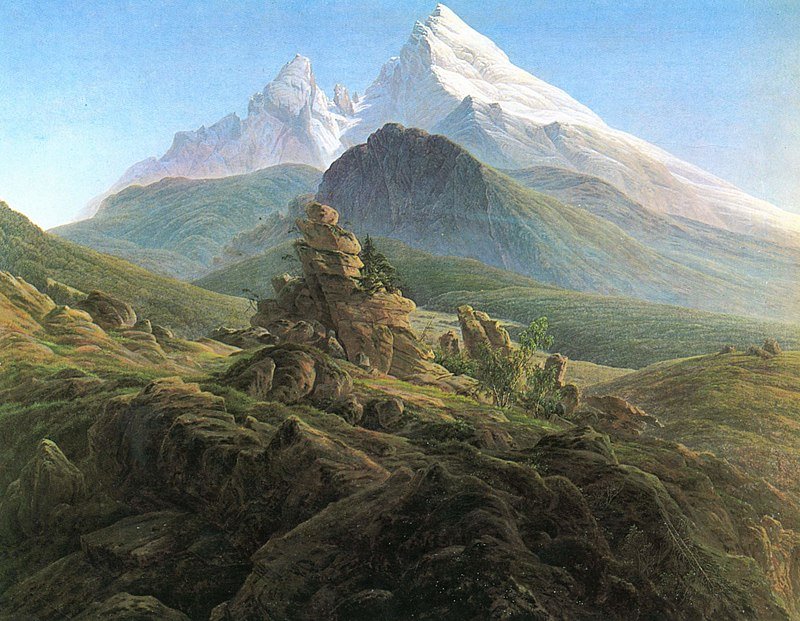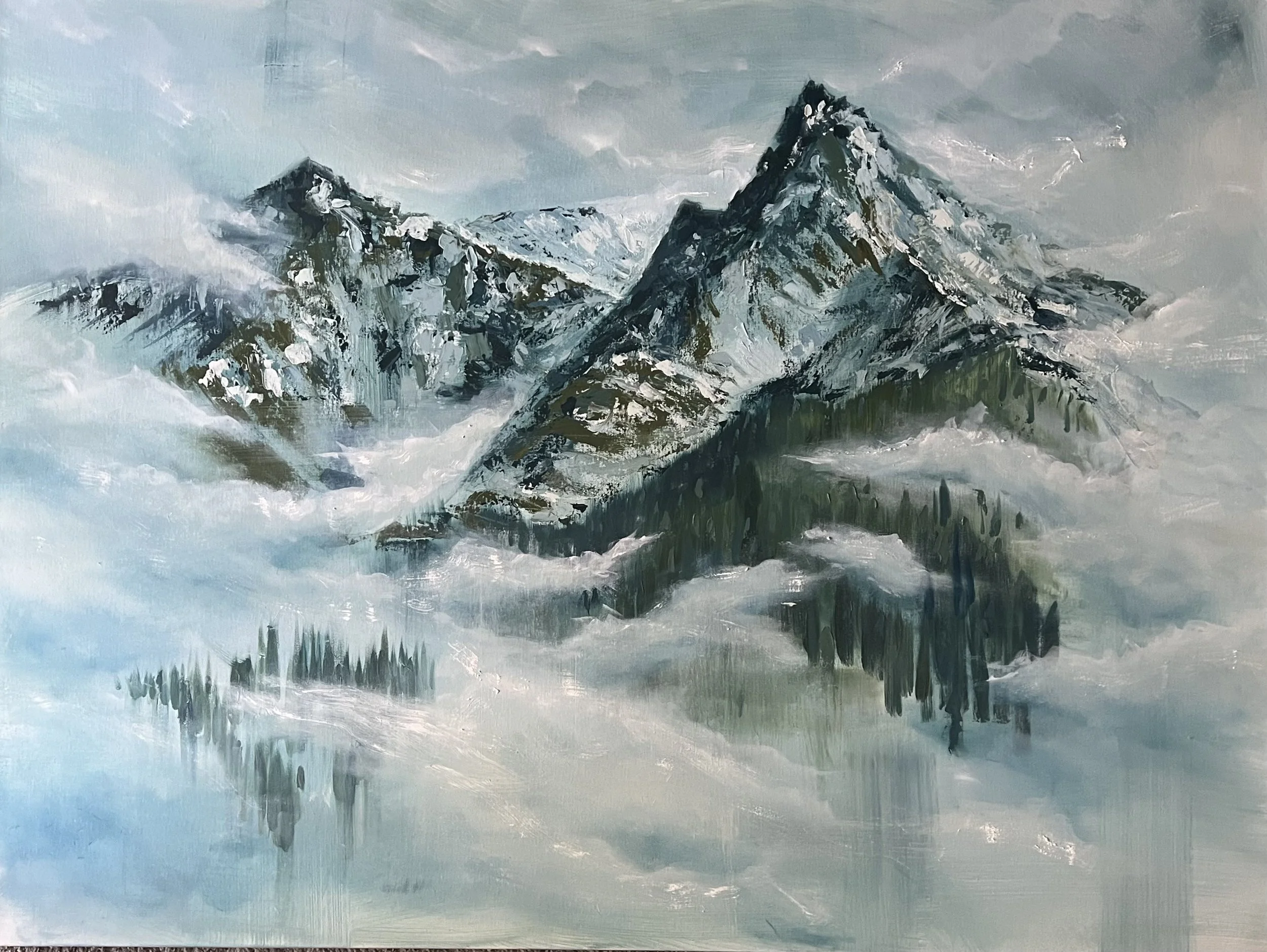Standing high up yet not uplifted
One of the more daunting tasks of an artist, especially ones trying to make this form of expression into their career, is finding their voice. Their style, their signature. Who are we as an artist?
It’s been an overwhelming concept to me, so I decided to start researching artists to find their foundations and what pushed their style. After researching landscape artists, the Hudson River School of artists, as well as portrait artists, I landed on two that I wanted to start studying: Albert Bierstadt and Caspar David Friedrich. Nature inspires so much of my art, photography, and my well-being, and I genuinely enjoy painting landscapes so it felt right to lean into learning more about nature as a muse.
In Friedrich’s book by Johannes Grave, I came across a review of his painting, The Watzmann (below). In the book, It is explained that around this time Friedrich was being assigned a spot in the sublime movement, a movement whose validity of artistic expression was being questioned. More or less, the sublime philosophy is simply explained: “for the feeling of the sublime, it is absolutely requisite that we see ourselves with absolutely no physical means of resistance and look into our nonphysical self for help.” which is fairly open to interpretation, but it is explained as more monumental experiences like threatening cliffs, thunderstorms, bursting volcanoes and other dramatic natural events that we are powerless to. Where the philosophers seem to veer in ideology from the critics is the glimmer of hope that lets the viewer understand their escape. Friedrich’s painting received criticism in missing the concept of the sublime by refusing to give the viewer a path out, view of a warmer valley, or general way home.
Caspar David Friedrich, The Watzmann, 1824/25 oil on canvas, 133 x 170 mm
“It cannot be denied that a feeling of loneliness seizes us as we behold this painting, a bleak void without comfort, standing high up yet not uplifted. If a painter wants to instill a lively sense in us of the dizzying height of our standpoint, he should not let the frame hide the valleys swimming in mist below our feet… The beholder is left with nothing but a sense of discomfort and discontent.” groused one critic. Another critic reinforced this saying, “… the utter loneliness of this scene has something chilling, one longs for a glimpse of an eagle or a mountain goat. In vain; the only life here is the air and the light; any sentient pulse is out of place up here.”
I feel there is a disconnect with these critics and the philosophy presented. It is when we feel that desolation and utter isolation that we surrender to whatever inner guidance we have to get us back towards warmth or our idea of safety. This conflicting feeling, the depths of the sublime cheapened by requiring some sort of shepherding to safety made me reflect on the growth of myself and the collective at large. There are so many messages of hope and healing that I see online nowadays, and I think it is imperative to note this surge happening post pandemic. So many of us were forced into isolation, into considering how we were honoring our time and ourselves. After the pandemic, I think that many can relate to the isolation, discomfort, wanting to see that glimmer of hope that life would return to normal. It never did. But many found that nonphysical light within and let it guide them towards the warmth in their wholeness.
So, I present to you, Standing high up yet not uplifted, the misty unsure mountaintop, the desolation that calls one to their higher self for help, for hope.




